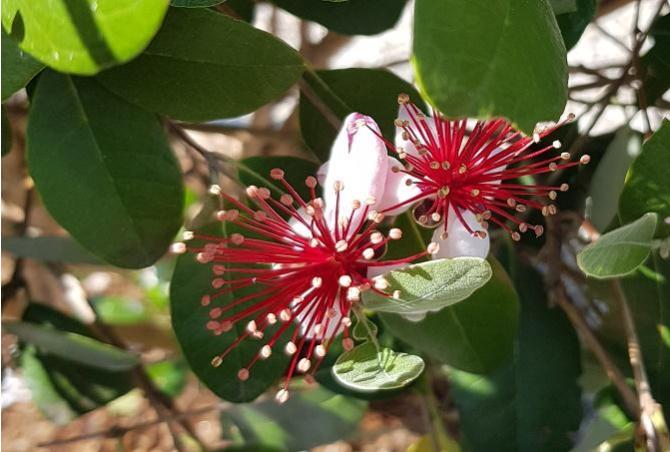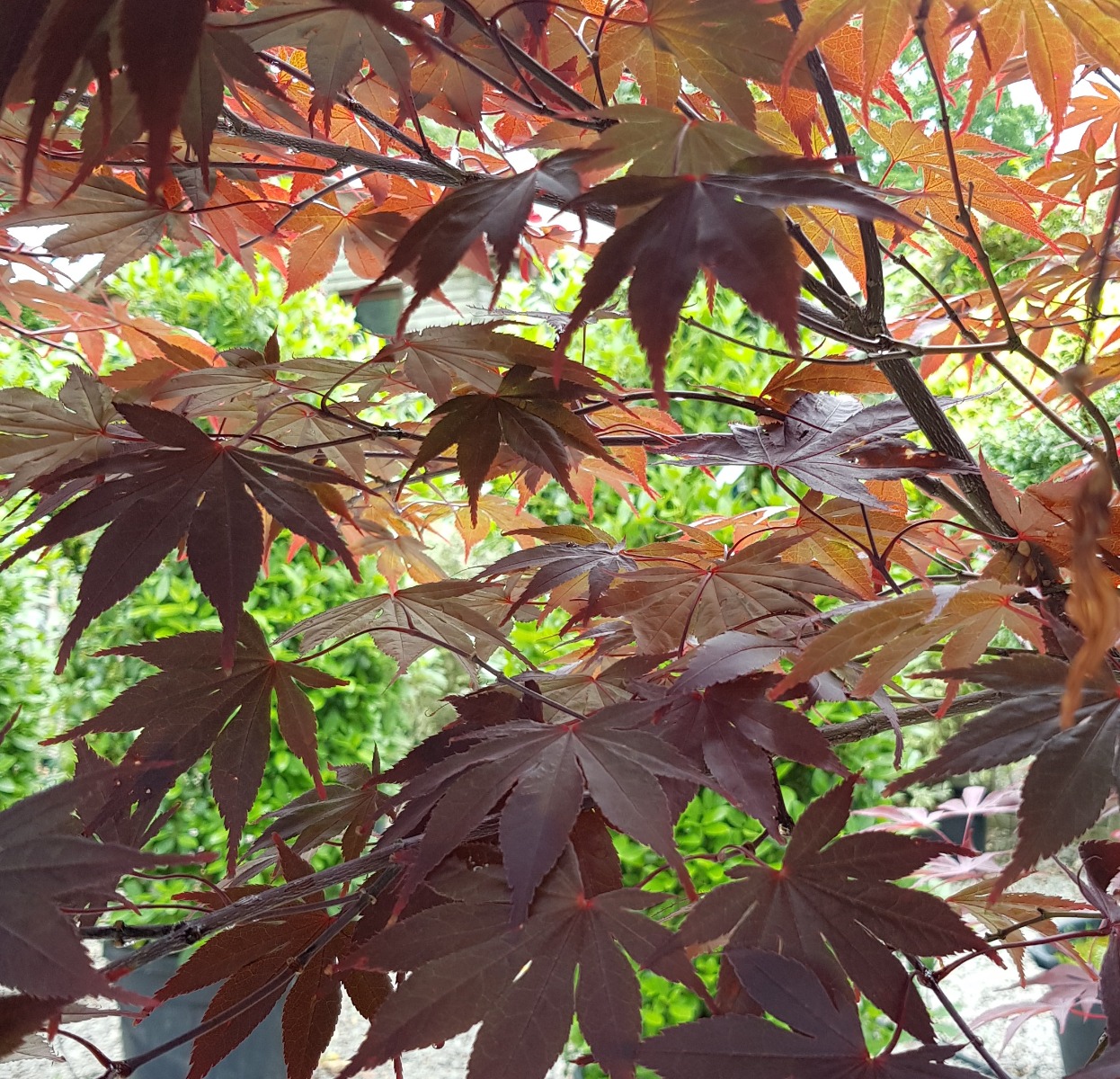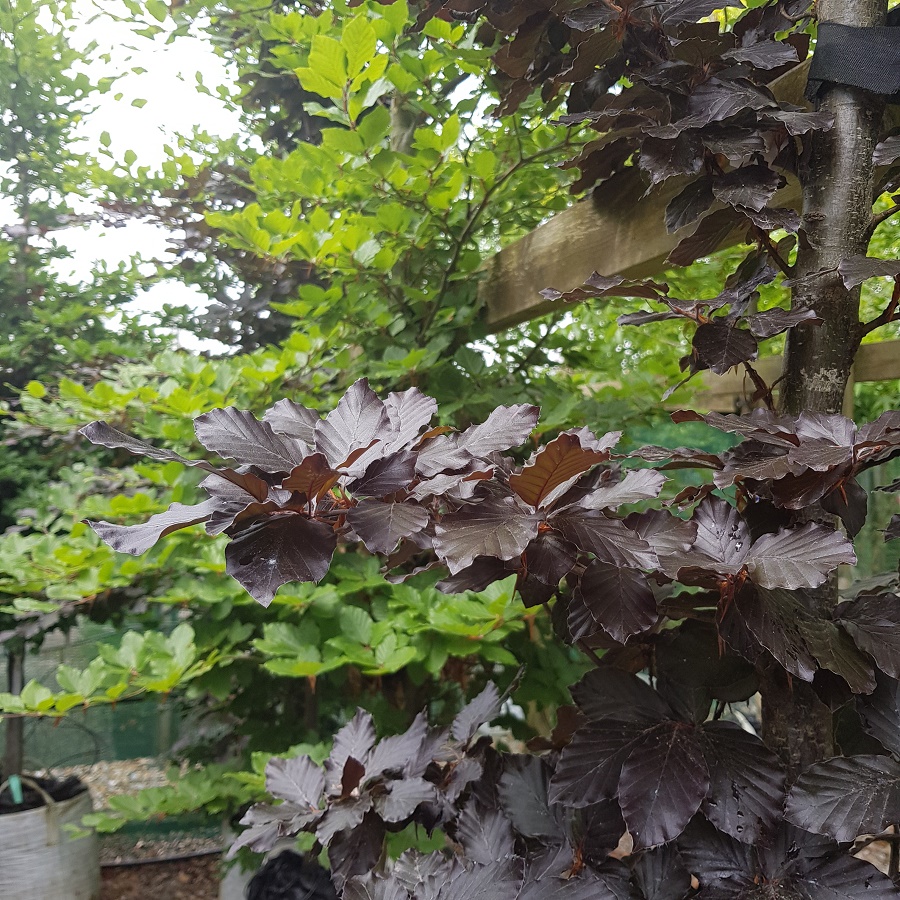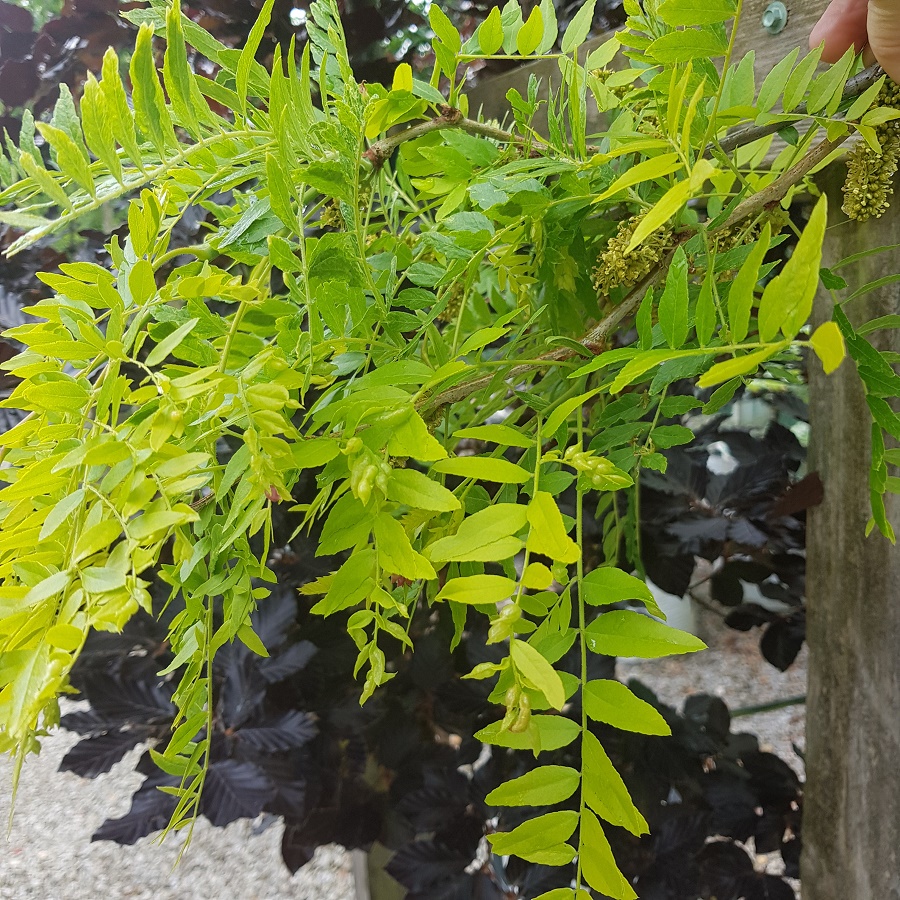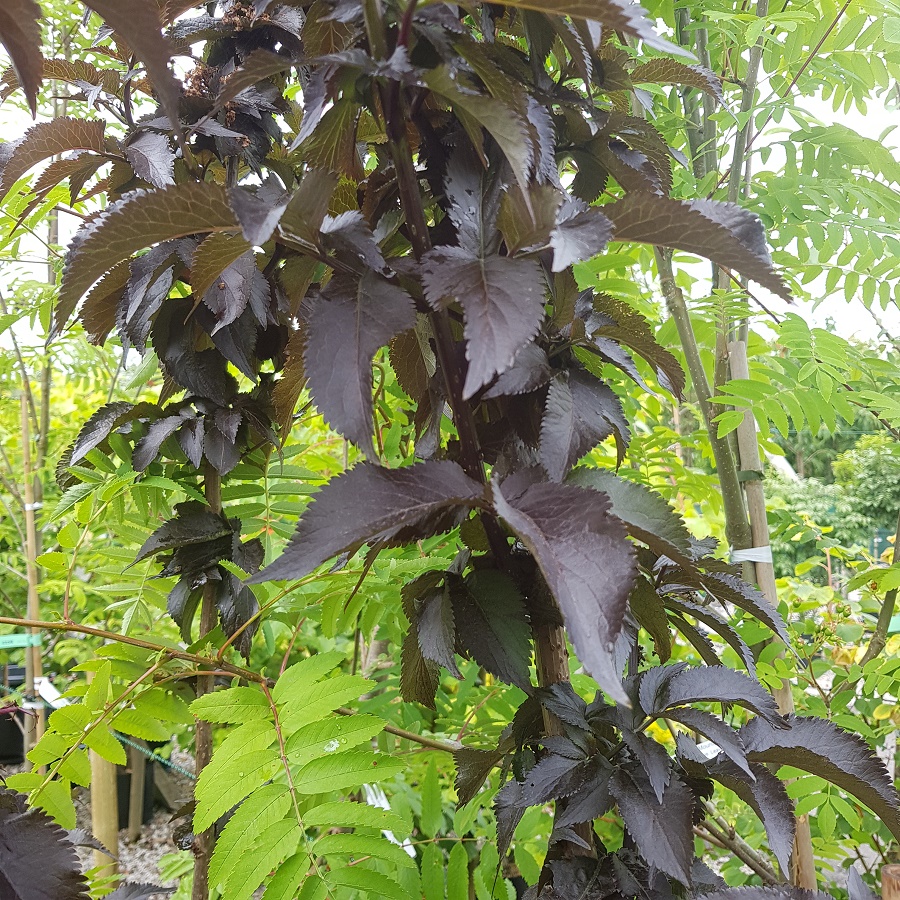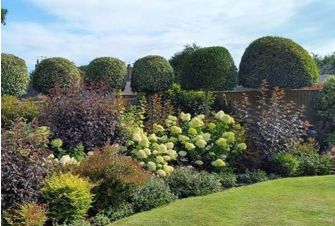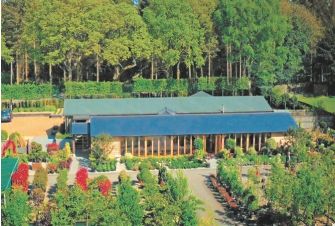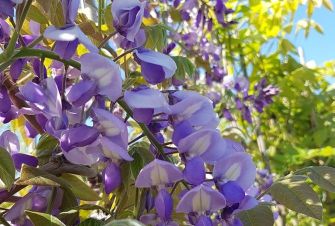Flowers versus Foliage
The beauty of flowers is well recognised and documented, and of course we not only love flowers but consider them essential for pollinators such as bees. You might not recognise the flower of the pineapple guava, Acca (or Feijoa) sellowiana in the main blog post image, as there is no doubt that it is highly unusual. But leaves also also contribute a huge amount to the glory of a garden. The creative effect that can be achieved through thoughtful tree and shrub planting is just as impactful as the herbaceous border, rose garden or wildflower meadow, in terms of visual attraction. Glorious greens are only the beginning of the artist's palette when it comes to foliage.
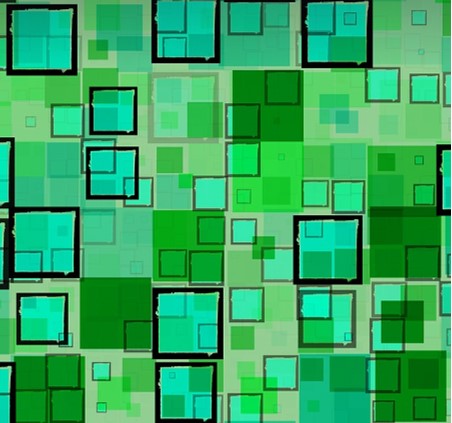
Within the colour green itself there are so many beautiful tones. Lime green, fern, pine, mint, avocado, olive and myrtle green, to mention just a few. The colour is largely due to chlorophyll, of course. Green is the result of the type of light that is absorbed by the structures within leaf cells (chloroplast) that harvest the sun's energy. It's all about reflecting and absorbing wavelengths within light. Chlorophyll is made from absorbing blue and red electromagnetic regions of the spectrum and it is then reflected as green, yellow and orange in various degrees. In addition, the structure of a leaf contains numerous other pigments including carotenoids and xanthophyll which also capture some of the sun's energy
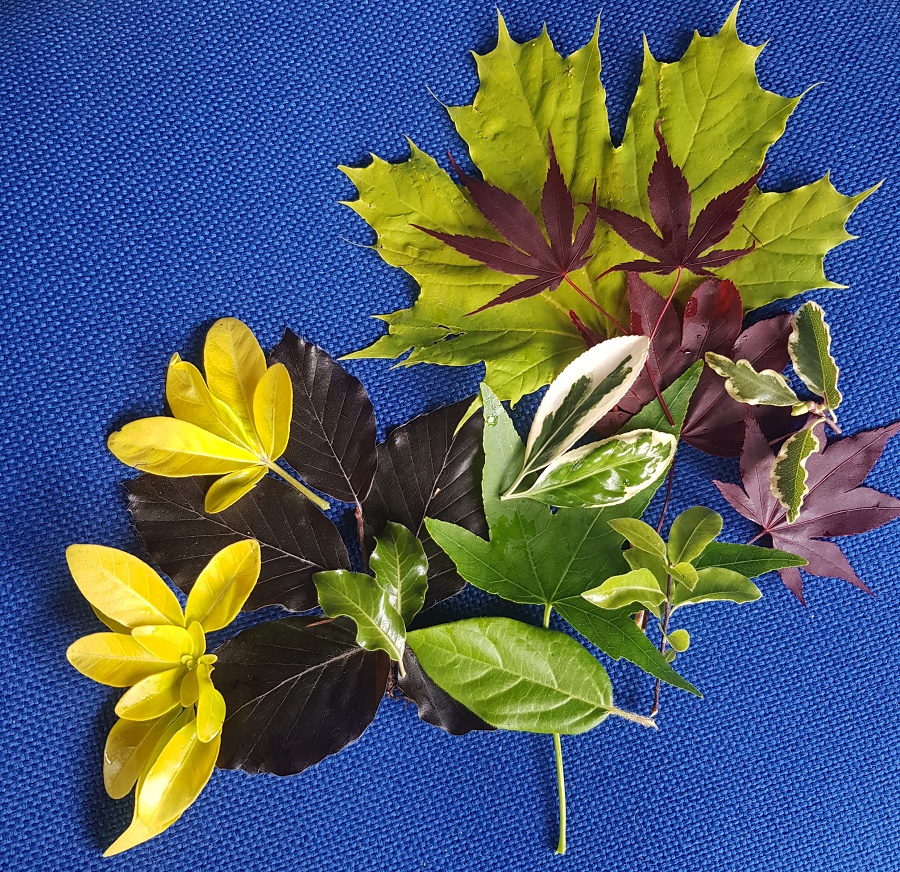
Trees have adapted to their surroundings over the course of time, which is why some varieties are happier in bright light and others prefer dappled shade. This is all to our advantage as it means we have a huge range of leaf colours, shapes and sizes to enjoy. Bear this in mind when planting. You not only want to achieve the very best beauty, but need to ensure the conditions are right for the type of tree. Right plant, right place is always the most important factor to consider. You can still achieve some wonderful results and best foliage-contrast effects by ensuring that a shade-loving tree is planted on the shady side of a larger tree, for example.
Leaves that are exposed to full sunlight tend to be thicker than those in the shade as this offers a form of heat-protection. They are also generally smaller as this provides a reduced area for water loss (transpiration), and they are lighter in colour. Some have red tinges. Leaves in shade are often larger in area and thinner than those growing in full sunlight. They therefore have a greater area to absorb light and carry out photosynthesis. They are normally darker green in colour.
Horticultural plant breeders have developed new cultivars to bring us the best of various plant atributes such as colour, shape, form, size and disease resistance. But it is up to us to ensure we provide what a plant needs. The Acer 'Fireglow', above, is able to withstand full sun without scorching the leaves, but some green-leafed Acers need partial shade in order for their foliage to look its best and for the tree to truly thrive . Read the plant label and do some research about a species and cultivar before deciding it's the best one for you. Or ask English Woodlands for advice! We love to help our customers find the very best tree for their garden. Consider not only the best place to plant your tree, but how it will look afterwards. Red-leafed trees look beautiful with a lime-green backdrop and, of course, preferably a clear blue sky!
Too much sunlight can have a negative effect on some trees. And excess shade will cause the demise of others. Some trees have adapted to high-light conditions by protecting the chlorphyll within leaves by having more red pigment. This provides shade for the chlorphyll which enables the leaves to continue to harvest the sun's energy. The colour of leaves, their thickness, shape and overall appearance are all adaptations that the plant has made in order to deal with the environment around it. Certain species have gradually adapted to cope with sun exposure and others have learnt to develop shade tolerance. Full sun is generally described as delivering at least six hours of direct sunlight each day and full shade to have up to two hours of sunlight each day. Photosynthesis is much more difficult to achieve in low-light such as within dense forests.
Creating impact with leaf colour contrast
The purple or copper beech, Fagus sylvatica 'Purpurea', pictured above, makes an excellent specimen tree or a hedge. It enjoys full sun and looks even more impactful when contrasted with green or yellow, as shown by the green beech behind. Beech has the added bonus of keeping some of the brown leaves during winter. Known as marcescense, this aids screening and helps in cases where privacy is required.
Gleditsia 'Sunburst', pictured above, is a rather beautiful lime-green or yellow-leafed tree that looks at its best against a dark backdrop. Shown here with Fagus sylvatica 'Purpurea'. The Gleditsia is a drought-tolerant tree that likes full sun and, once established, can cope with fairly long periods of dry weather. The leaflets are small, which prevents too much water loss. It also provides charming, dappled shade which is most welcome during hot periods, without casting too much dense shadow.
Sambucus 'Black Tower' is an impactful, dark-leafed large shrub or small tree. Its leaves emerge green but they turn deep burgundy when it is exposed to full sun. This upright shrub makes a pleasing architectural form against a light-coloured wall or yellow-leafed plants.
Specimen trees can be planted in isolation
Specimen trees are the stars of the garden or landscape. They deserve a space of their own, very much like a sculpture in the garden. A specimen is a focal point, such as a larger, stately form, a multi-stemmed tree, or topiary. You want your specimen to be located so that it can be seen from certain points of the home or garden. It also needs to stand out against the background or else it will fade into insignificance. Think about the form, the size and the colour. Give it space, set apart from other trees, so that it can grow into a natural shape without needing to be pruned, unless it is topiary! What's more, it needs to be planted in the right place so that your investment thrives. When you plant a group of trees, the individuals become less important than the grouping. Your specimen is designed to be looked at. Indeed, the word itself comes from the Latin specere: 'to look'.
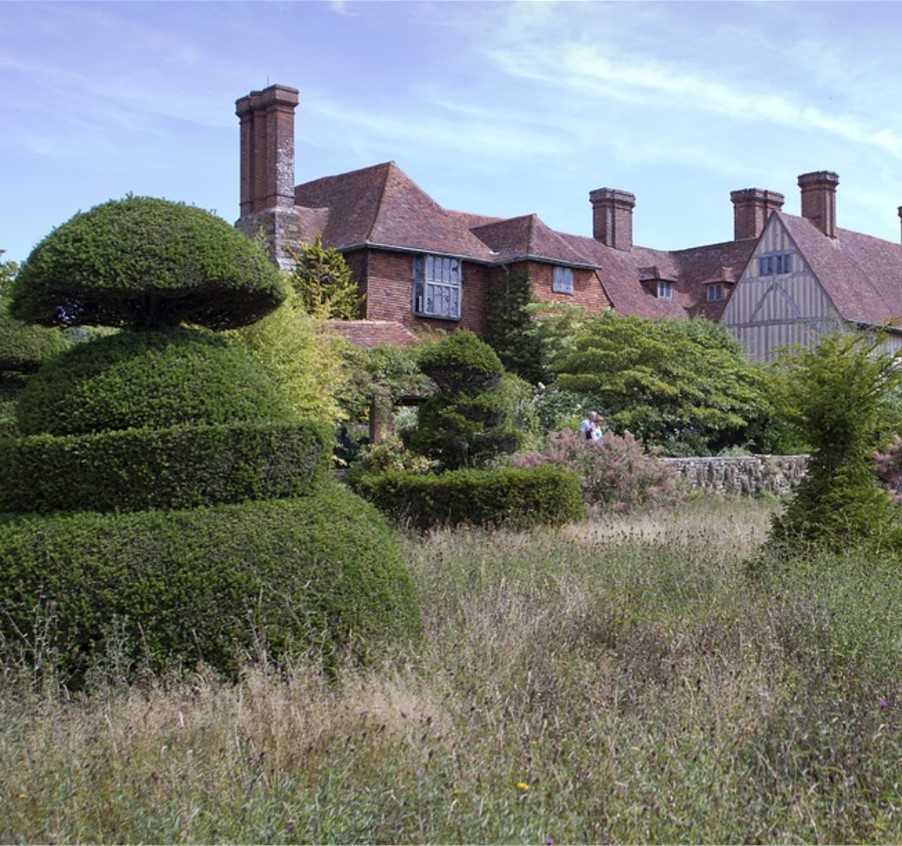
The yew topiary at Great Dixter is carefully spaced within a relaxed lawn to create maximum impact and to be seen from different positions.
Flowers or Foliage - Which is Best?
In conclusion: they are both highly desirable and neither one nor the other can be deemed as being 'better'. Every tree or shrub produces flowers. Some are glorious, including ornamental cherries and crab apple blossom. Many are inconspicuous, but that is not the main reason why we love the plant. Some foliage is more spectacular than others because of the shape, the colour or even the smell. It is perfectly possible to have a magnificant garden filled only with trees and shrubs that have been chosen to complement and constrast with each other. The bees will find less pollen and nectar than within a flower garden, but habitats for wildlife will be plentiful.
A flower garden will consist mainly of perennials and some shrubs. Their foliage will probably be relatively insignificant because the flowers are designed to take centre stage. During the spring and summer, the garden will offer a huge range of attractions for bees, butterflies and other beneficial garden insects. However, most plants will die to the ground in winter.
In terms of nature, a combination of the two is best. Harmony is the key to creating the best possible space.
Buy five large trees and qualify for a discount from English Woodlands
English Woodlands tree and shrub nursery, based in East Sussex near Heathfield, is delighted to offer you a discount if you are buying five larger trees or more (sized 250cm +). Please call our sales office for a discount. Tel 01435 862992 or email sales@englishwoodlands.com

